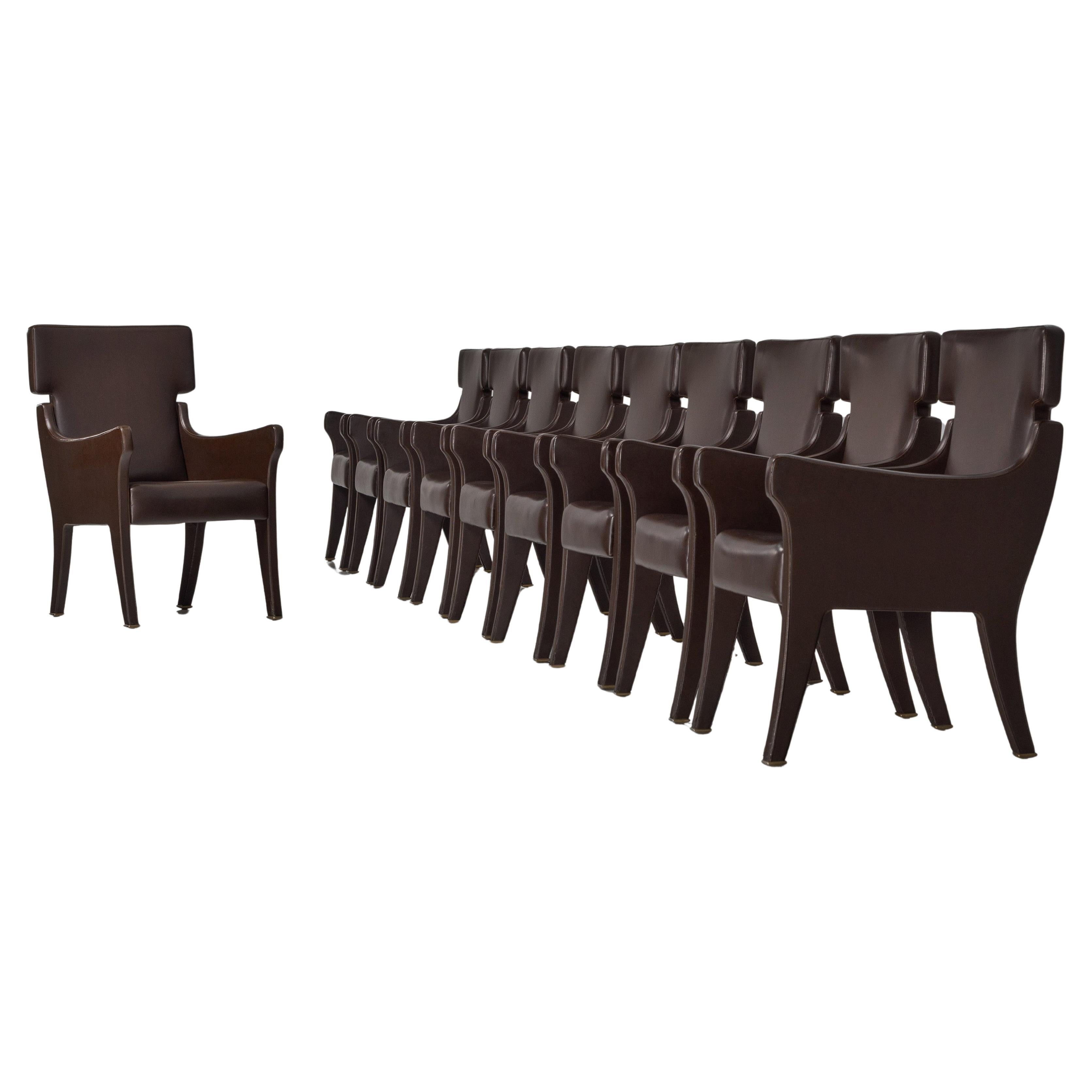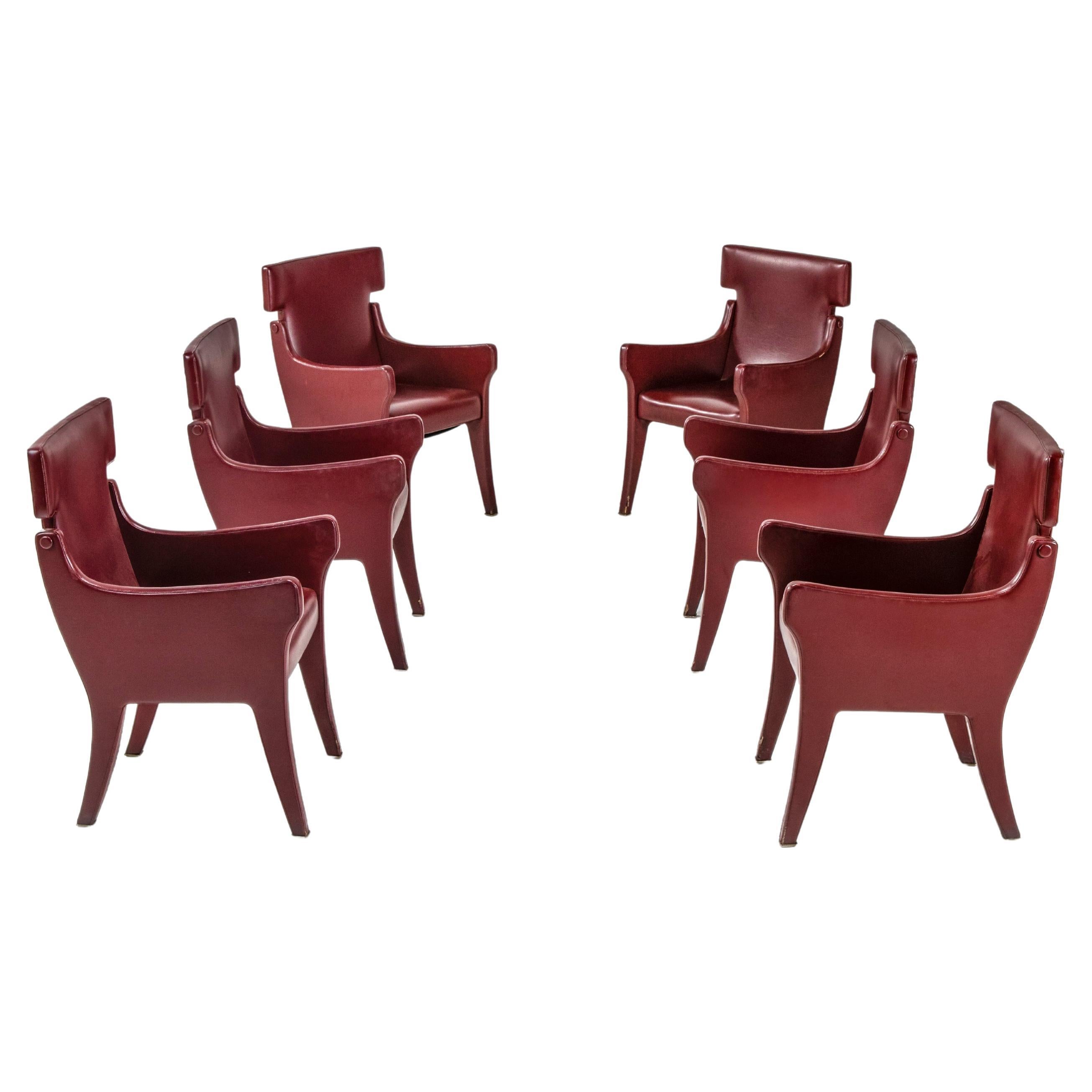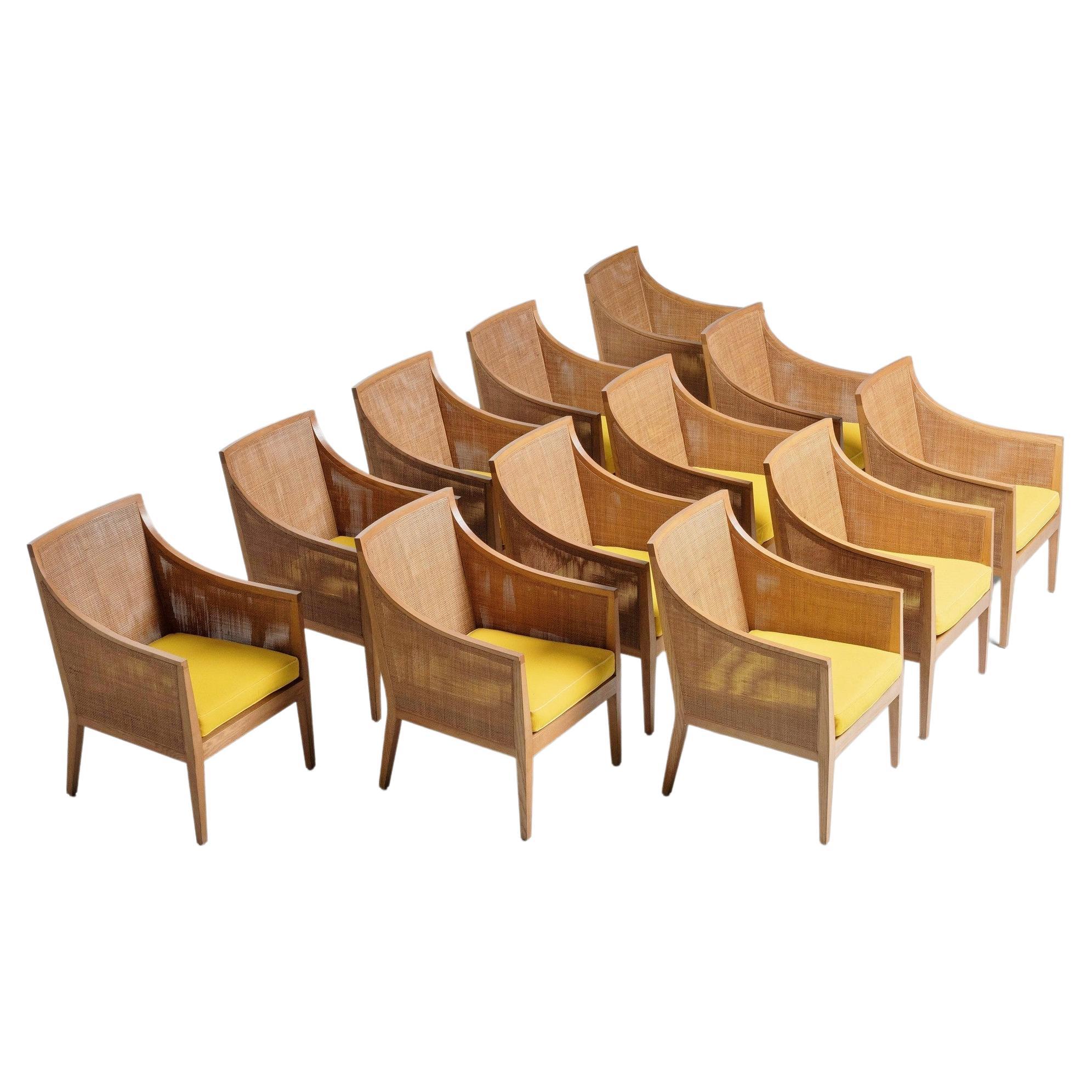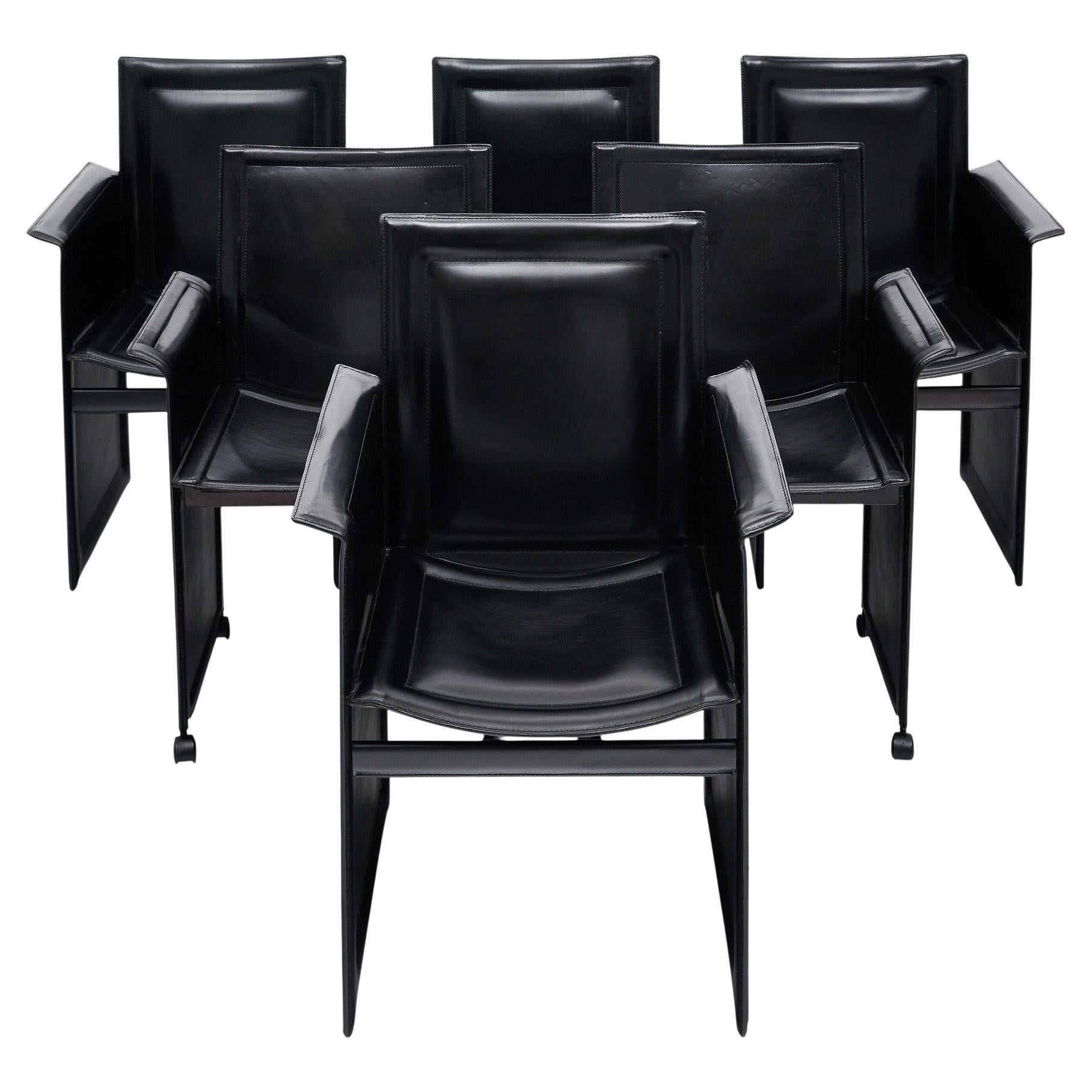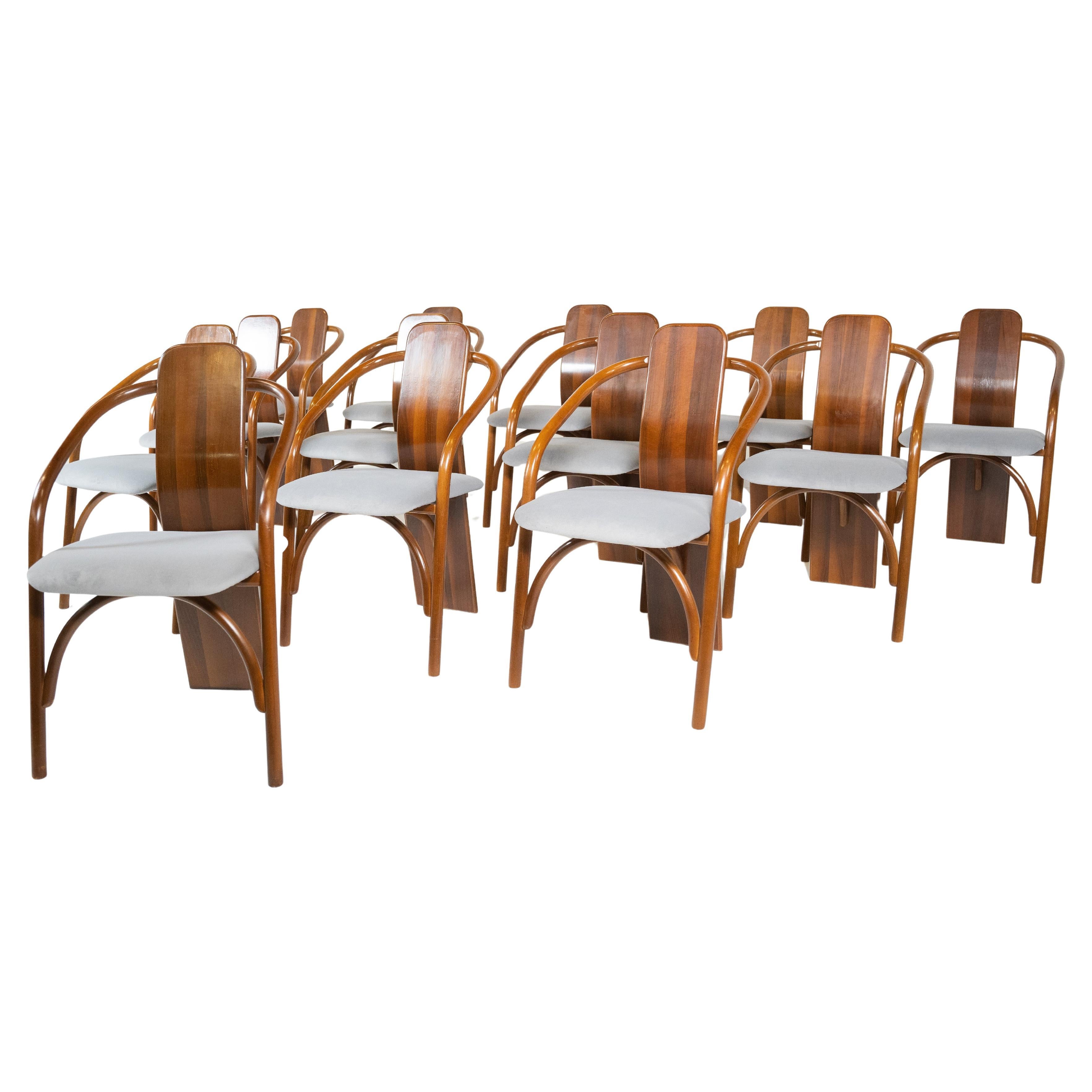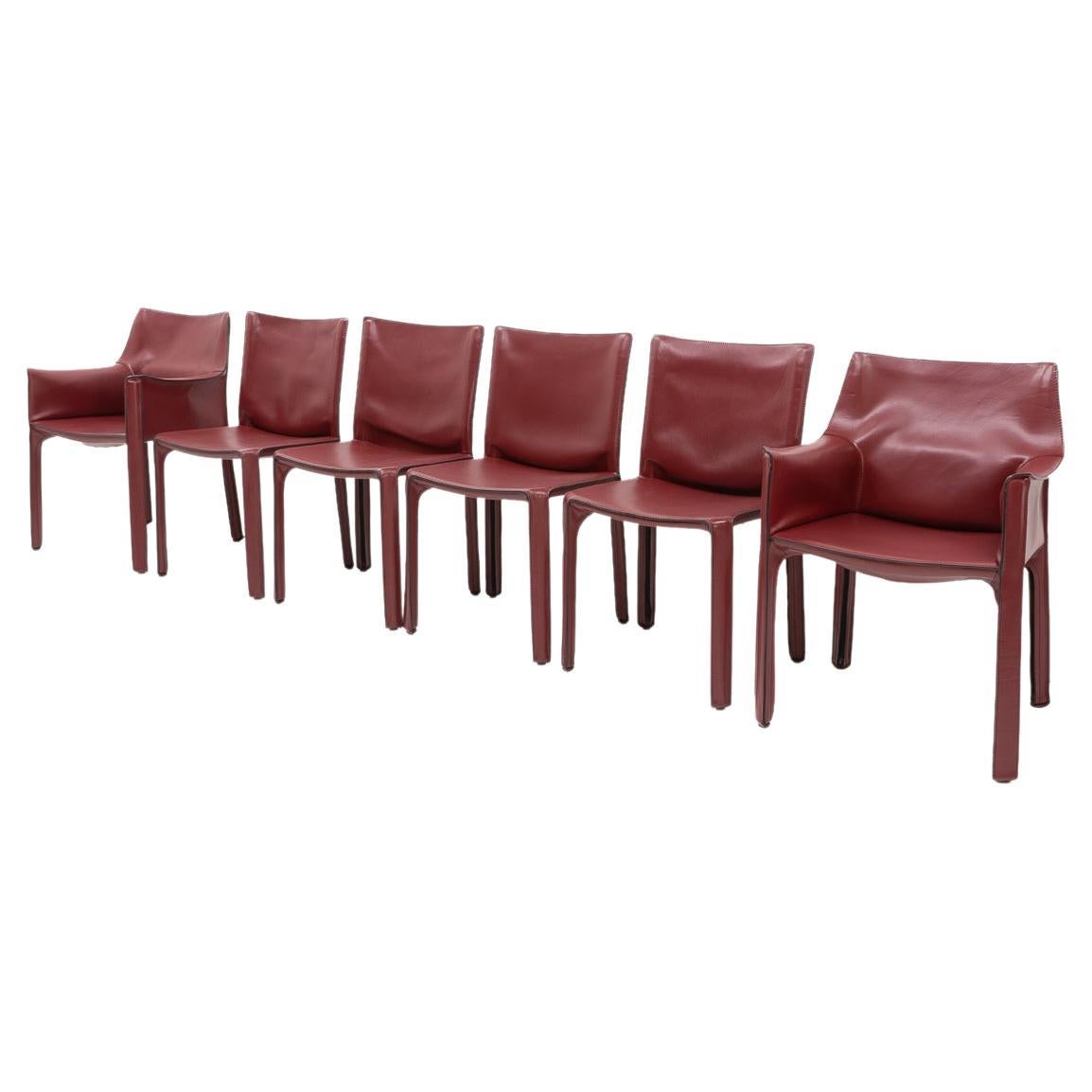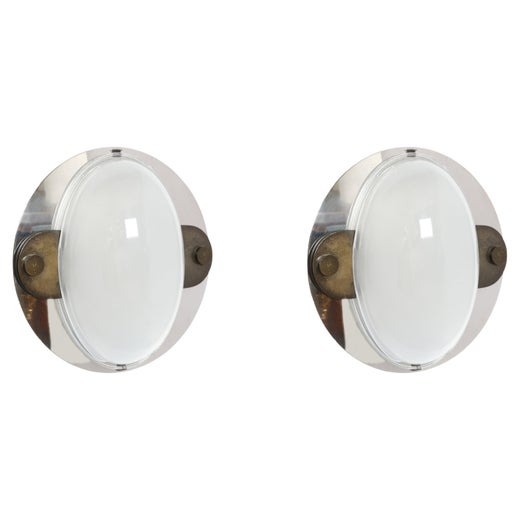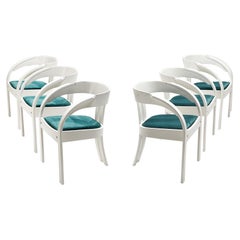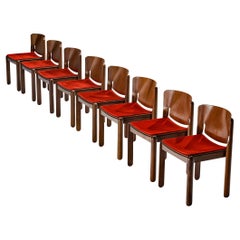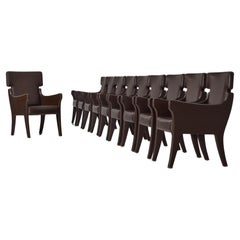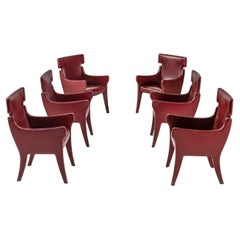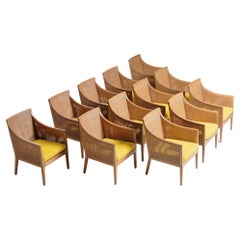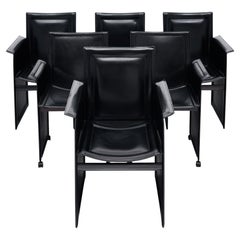Rare Ignazio Gardella for Azucena Early Set of Ten ‘R63’ Armchairs
Acerca del artículo
- Creador:Azucena (Fabricante),Ignazio Gardella (Diseñador)
- Dimensiones:Altura: 90 cm (35,44 in)Anchura: 61 cm (24,02 in)Profundidad: 65 cm (25,6 in)Altura del asiento: 44 cm (17,33 in)
- Se vende como:Juego de 10
- Estilo:Moderno de mediados de siglo (Del período)
- Materiales y técnicas:
- Lugar de origen:
- Época:
- Fecha de fabricación:1960s
- Estado:Desgaste acorde con la edad y el uso. Every item Morentz offers is checked by our team of 30 craftspeople in our in-house workshop. Special restoration or reupholstery requests can be done. Check ‘About the item’ or ask our design specialists for detailed information on the condition.
- Ubicación del vendedor:Waalwijk, NL
- Número de referencia:Vendedor: 501169901stDibs: LU933145344512
Azucena
Los muebles vintage Azucena son elegantes y acogedores: los apliques de pared , los sillones y las mesas auxiliares del apreciado fabricante milanés de mediados de siglo , que se caracterizan por su sencilla simetría y sus materiales cuidadosamente contrastados, pueden encontrarse en los salones de los amantes del diseño de toda Italia.
Azucena fue fundada en 1947 por tres figuras destacadas de la arquitectura italiana del siglo XX: Luigi Caccia Dominioni, Ignazio Gardella y Corrado Corradi Dell'Acqua. En un principio, el trío fundó Azucena para amueblar los interiores de los edificios que habían diseñado, pero encontraron una sólida oportunidad de negocio en la fabricación de piezas individuales de esas colecciones para los consumidores de la posguerra. Y puesto que los fundadores de la empresa tomaron prestado el nombre de la marca de un intrigante personaje de la ópera de Giuseppe Verd Il Trovatore, resulta apropiado que los muebles por los que se conoce a Azucena sean prácticos pero desprendan un toque de alegría.
Lo mejor del modernismo italiano combina descaro y audaz funcionalidad con diseño provocador y reflexivo, y Azucena está profundamente arraigada en esa tradición. Mientras que sus mesas de comedor de latón y nogal de mediados de siglo de la época y sus mesas de centro apilables -creadas por gente como Dell'Acqua y Vico Magistretti - son excepcionalmente discretas en espacios pequeños y están enmarcadas en líneas limpias, Dominioni diseñó en la década de 1970 unos sillones gruesos y envolventes tapizados en una llamativa tela roja.
Entre los diseños más exitosos e icónicos de Azucena se encuentra también el mueble más famoso de Dominioni: la silla minimalista Catalina. Tras su debut en la Trienal de Milán de 1957, la silla Catalina, con su armazón de acero esmaltado de generosas curvas y su cojín de piel afelpada, se convirtió en una sensación instantánea. Otros diseños perdurables de Dominioni para Azucena son la lámpara Monachella, el sillón ABCD y la versátil otomana Cilindro.
El fabricante italiano de muebles B&B Italia adquirió Azucena en 2018 y ha reeditado varios diseños de la legendaria cartera de la marca, como la lámpara Imbuto, el sillón Catalina y la mesa Cavalletto.
En 1stDibs, encuentra iluminación vintage Azucena , mesas , asientos y mucho más.
Fundada en 2006, Morentz cuenta con un equipo de unos 55 restauradores, tapiceros, asesores de interiores e historiadores del arte, lo que la convierte en una galería, taller y estudio de tapicería, todo en uno. Cada día, un conjunto cuidadosamente seleccionado de muebles del siglo XX llega de todo el mundo al almacén de la empresa, donde el equipo examina minuciosamente cada pieza para determinar qué trabajo hay que hacer, si es que hay que hacer alguno. Tanto si se trata de una nueva tapicería como de una restauración completa, el objetivo de Morentz es siempre honrar la intención del diseñador y, al mismo tiempo, satisfacer los deseos del cliente. El equipo está a la altura de cualquier reto, desde restaurar una sola pieza a su gloria original hasta amueblar un proyecto hotelero a gran escala.
- EnvíoRecuperando presupuesto…Envío desde: Waalwijk, Países Bajos
- Política de devolución
Más de este vendedor
Ver todoVintage, Década de 1960, Italiano, Moderno de mediados de siglo, Sillones
Tela, Madera
Vintage, Década de 1960, Italiano, Moderno de mediados de siglo, Sillas ...
Terciopelo
Vintage, Década de 1960, Italiano, Moderno de mediados de siglo, Sillas ...
Terciopelo, Nogal
Vintage, Década de 1960, Italiano, Moderno de mediados de siglo, Sillas
Cuero, Ceniza
Vintage, Década de 1960, Francés, Moderno de mediados de siglo, Sillas d...
Haya
Vintage, Década de 1980, Italiano, Posmoderno, Sillas de comedor
Cuero, Haya
También te puede gustar
Vintage, Década de 1960, Italiano, Moderno de mediados de siglo, Sillones
Latón
Vintage, Década de 1960, Italiano, Sillones
cuero de imitación, Espuma, Madera contrachapada
Vintage, Década de 1970, Italiano, Moderno de mediados de siglo, Sillones
Tela, Ratán, Haya
Vintage, Década de 1970, Italiano, Moderno de mediados de siglo, Sillas ...
Metal
Vintage, Década de 1980, Italiano, Moderno de mediados de siglo, Sillas ...
Madera
Década de 1990, Italiano, Moderno de mediados de siglo, Sillas sin apoya...
Metal
